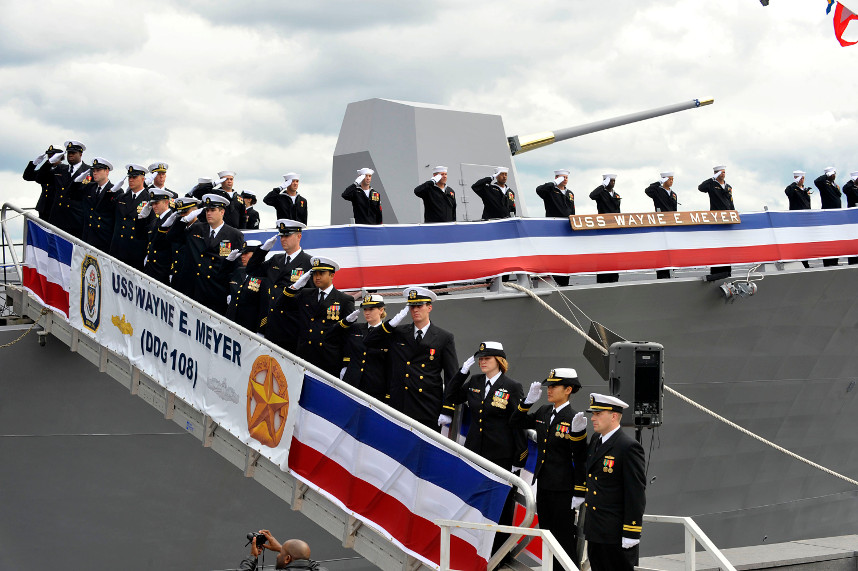OSHA Safety: Familiarize Yourself with Gangway Regulations

OSHA requirements are set by statute, standards and regulations. Our interpretation letters explain these requirements and how they apply to particular circumstances, but they cannot create additional employer obligations. This letter constitutes OSHA’s interpretation of the requirements discussed. Note that our enforcement guidance may be affected by changes to OSHA rules. Also, from time to time we update our guidance in response to new information. To keep apprised of such developments, you can consult OSHA’s website at http://www.osha.gov.
Personnel must board vessels safely using approved boarding devices. Movement of the floating vessel can cause movement of the boarding device, thus increasing the possibility of workers falling or being injured by a moving device.
Potential Hazards:
- Being injured when boarding a vessel
- Falling off the gangways or ladders to a lower level or into the water
- Structural failure of a gangway or ladder causing the person to fall to a lower level or into the water
- Movement of the gangway or ladder resulting in injuries
- Being struck by moving material or cargo loads
Requirements and Example Solutions:

The employer shall not permit employees to board or leave any vessel, except a barge or river towboat, until the following requirements have been met:
- An adequate gangway must be provided. When a gangway is not practical, then an straight ladder or Jacob’s ladder must be used. [29 CFR 1915.74(a)(1)]
- Gangway must maintain clear access, have at least 33-inch-high hand rails, be properly trimmed, and be properly illuminated. [29 CFR 1915.74(a)(2), (a)(4), (a)(5), (a)(8), (a)(10) and (a)(11)]
- When the end of the gangways overhangs the water, it must be bridged and a net must be present. [29 CFR 1915.74(a)(6) and (a)(7)]
- When the upper end of the gangway or ladder rests on or is flush with the top of the bulwark or hand rail, steps with adequate guardrails are required. [29 CFR 1915.74(a)(9)]
- Suspended loads must not pass over the gangway. [29 CFR 1915.74(a)(12)]
OSHA RULES
1918.22(a)
Whenever practicable, a gangway of not less than 20 inches (.51 m) in width, of adequate strength, maintained in safe repair and safely secured shall be used. If a gangway is not practicable, a straight ladder meeting the requirements of 1918.24 that extends at least 36 inches (.91 m) above the upper landing surface and is secured against shifting or slipping shall be provided. When conditions are such that neither a gangway nor straight ladder can be used, a Jacob’s ladder meeting the requirements of 1918.23 may be used.
1918.22(b)
Each side of the gangway, and the turntable, if used, shall have a hand rail with a minimum height of 33 inches (.84 m) measured perpendicularly from rail to walking surfaces at the stanchion, with a midrail. Rails shall be of wood, pipe, chain, wire, rope or materials of equivalent strength and shall be kept taut always. Portable stanchions supporting railings shall be supported or secured to prevent accidental dislodgement.
1918.22(c)
The gangway shall be kept properly trimmed.
1918.22(d)
When a fixed flat tread accommodation ladder is used, and the angle is low enough to require employees to walk on the edge of the treads, cleated duckboards shall be laid over and secured to the ladder.
1918.22(e)
When the gangway overhangs the water so that there is danger of employees falling between the ship and the dock, a net or suitable protection shall be provided to prevent employees from receiving serious injury from falls to a lower level.
1918.22(e)
When the gangway overhangs the water so that there is danger of employees falling between the ship and the dock, a net or suitable protection shall be provided to prevent employees from receiving serious injury from falls to a lower level.
1918.22(f)
If the foot of a gangway is more than one foot (.30 m) away from the edge of the apron, the space between them shall be bridged by a firm walkway equipped with a hand rail with a minimum height of approximately 33 inches (.84 m) with midrails on both sides.
1918.22(g)
Gangways shall be kept clear of supporting bridles and other obstructions, to provide unobstructed passage. If, because of design, the gangway bridle cannot be moved to provide unobstructed passage, then the hazard shall be properly marked to alert employees of the danger.
1918.22(h)
Obstructions shall not be laid on or across the gangway.
1918.22(i)
Handrails and walking surfaces of gangways shall be maintained in a safe condition to prevent employees from slipping or falling.
1918.22(j)
Gangways on vessels inspected and certificated by the U.S. Coast Guard are deemed to meet the requirements of this section.
[62 FR 40141, July 25, 1997]
OSHA DOCUMENTS
Bristol Industries of P.A. Proudly Presents Our New BristolRamp.com Website!
Info coming soon! Thanks for visiting.
https://bristolramp.com < — Click here to return to our homepage
